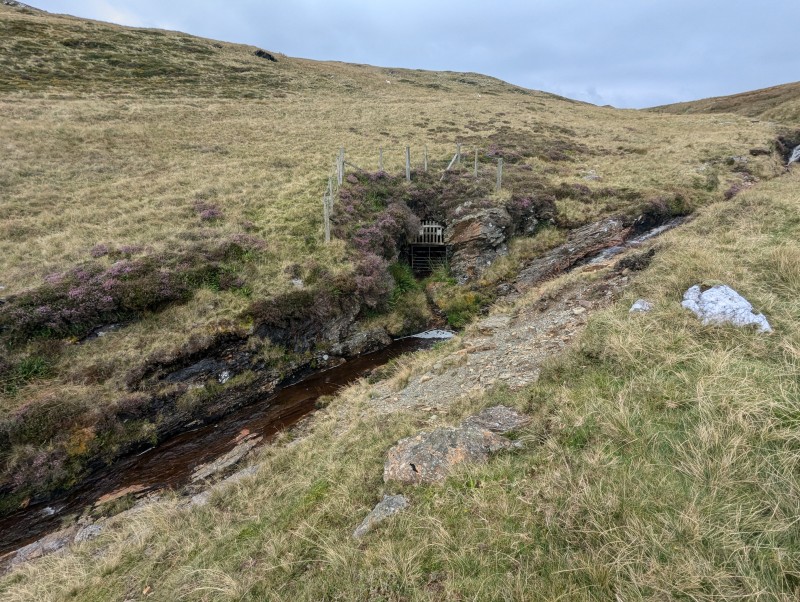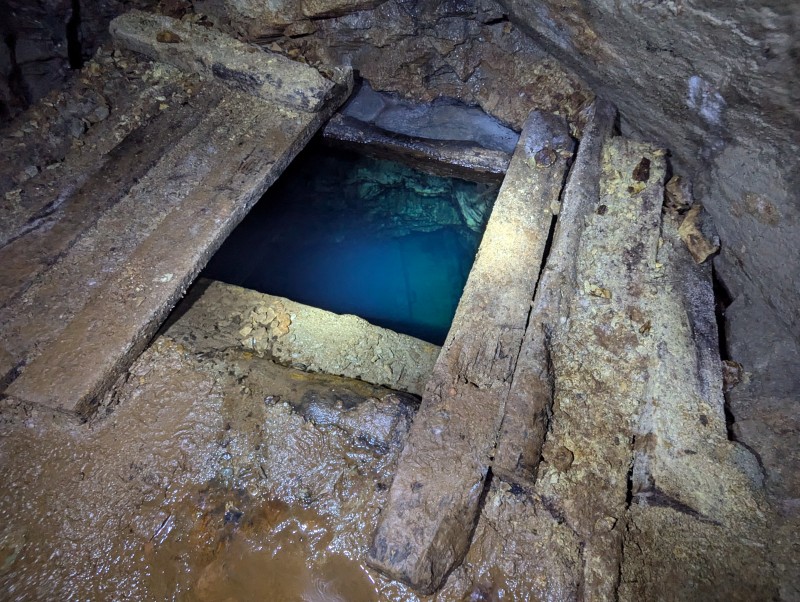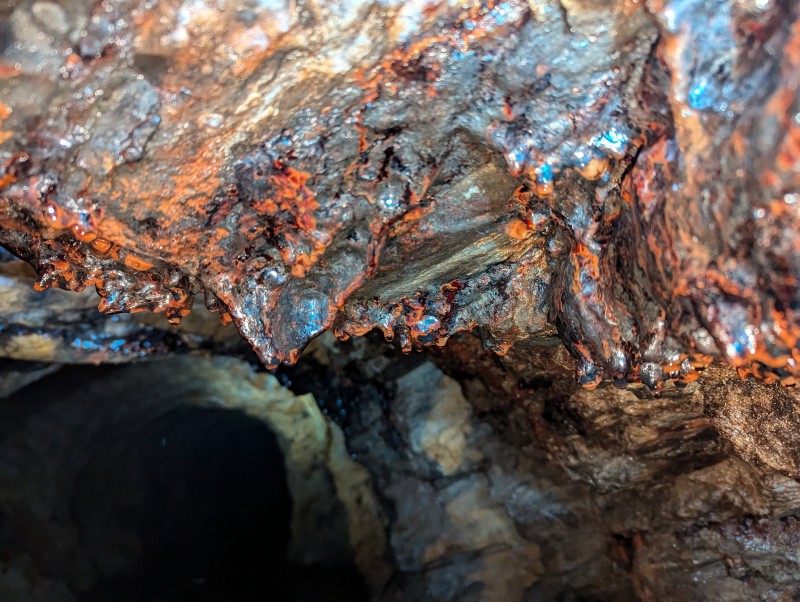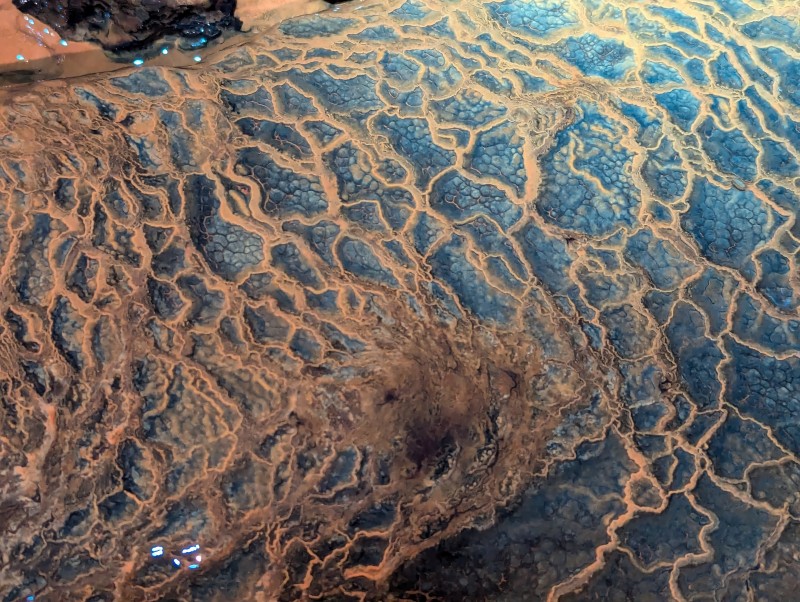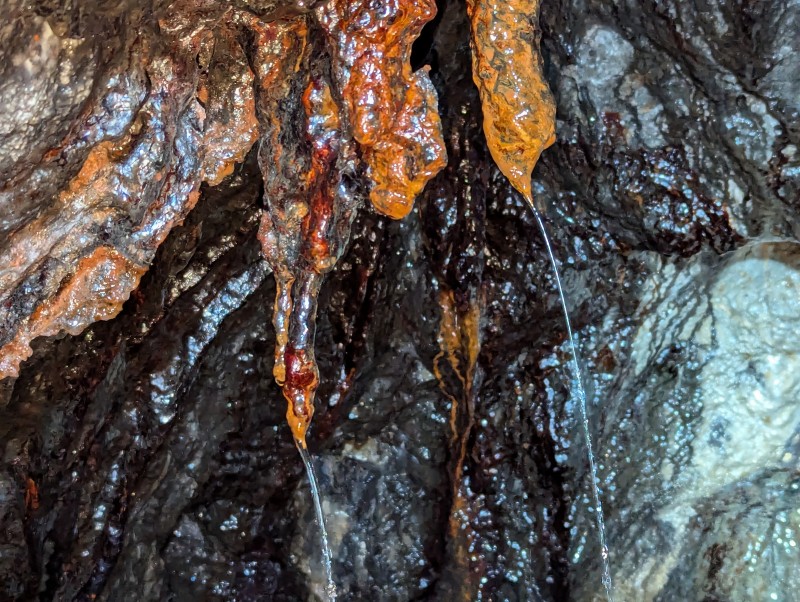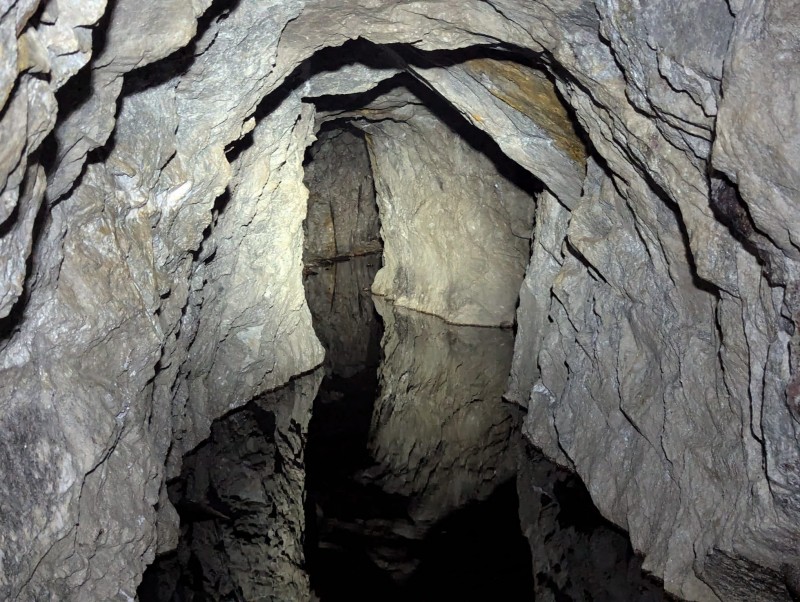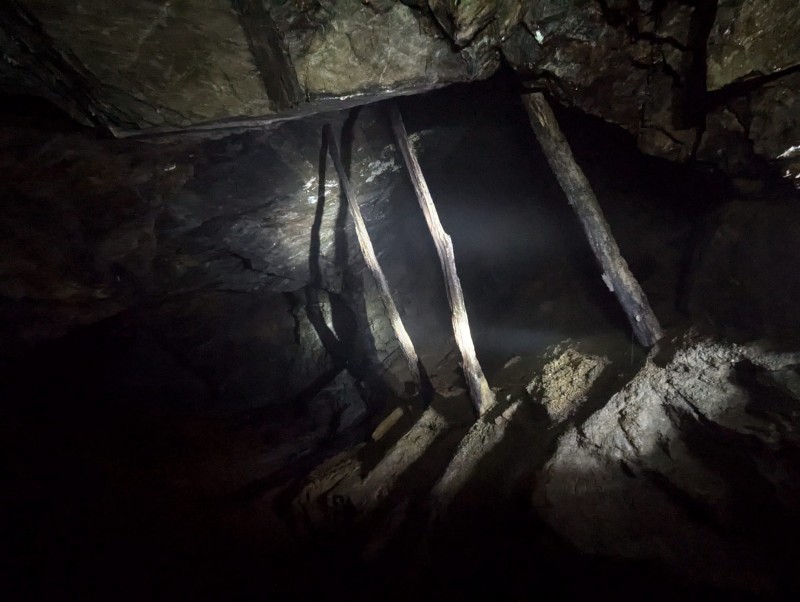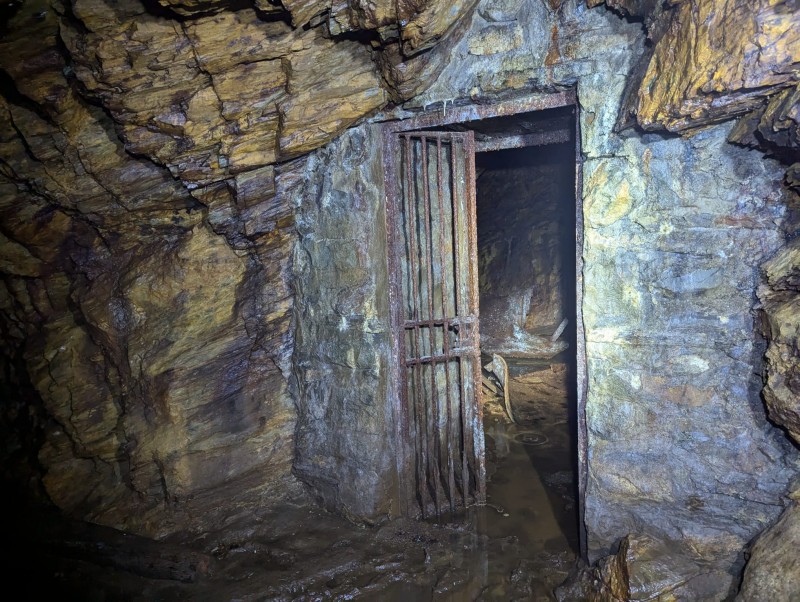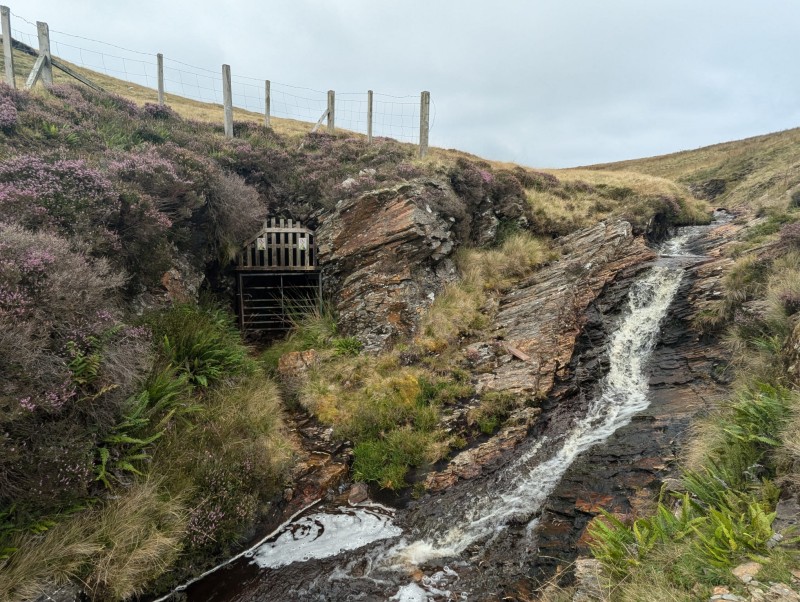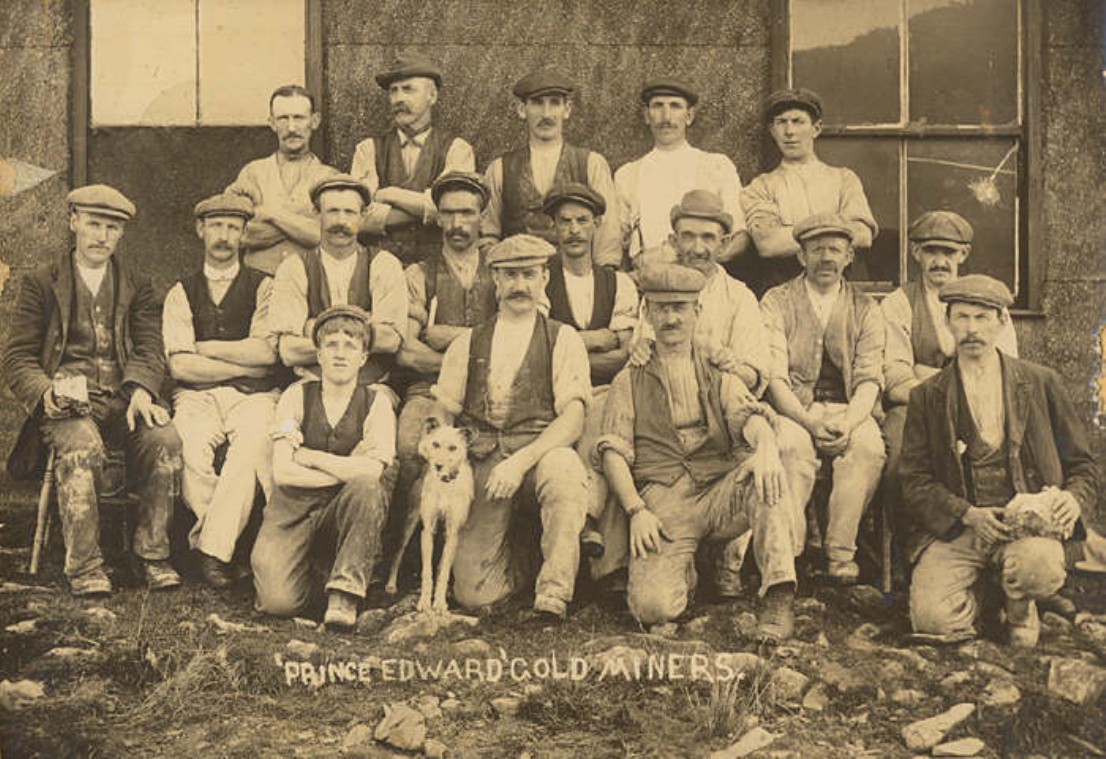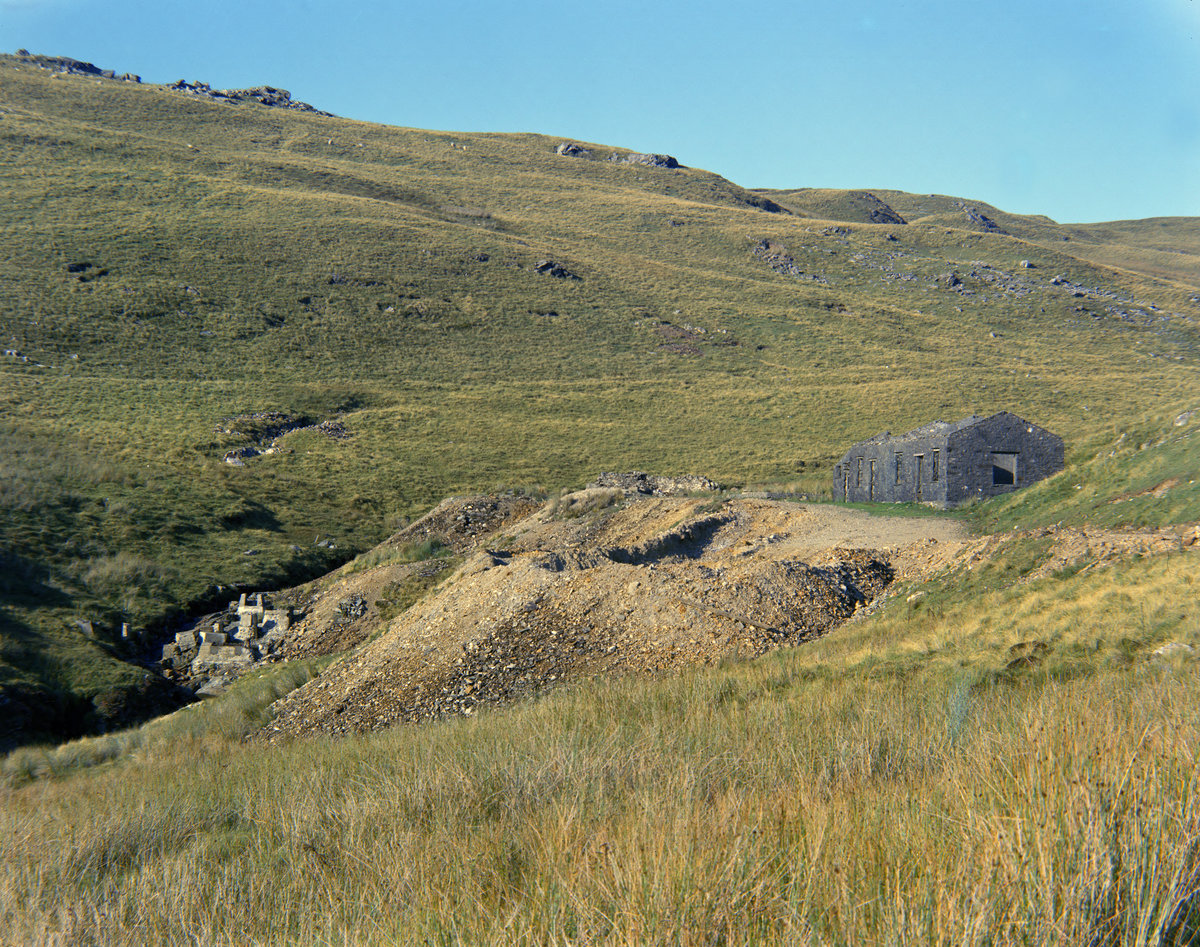The top entrance is a series of shallow workings, with a slippery ramp leading downwards. This is not recommended without a rope.
The bottom entrance next to the river gives access to the main drainage adit. Immediately inside on the right is a small chamber with hefty built up wall and a rusted iron gate - a strong room for mine product?
The adit continues for some distance in a few inches of water to a cross cut, the longest of which is on the right. In this part, and many parts of the mine there is a lot of manganese looking black deposits. There is not a trace of copper nor lead, although zinc is present in some samples from this mine held by the National Museum of Wales.
Onwards again to another cross cut, and what appears to have been the main area of mining. The left branch has extensive stopes upwards at an angle, with some collapses. There is also a flooded winze on the right. Further on, a small rock fall forms a dam, holding back the water in the following passage as a dark canal.
Back at the junction, the floor is very ochrey and slippery. There is a stope on the right with three rather photogenic timber props. There is another flooded winze on the left with the remains of a pulley arrangement just about visible. Across the passage is the base of what seems to have been a hand winch. Further on, the passage splits into three with crawlways over rubble.
Back in the main passage, the adit continutes for some distance to a fork. Onwards is low, with the sound of water. To the left leads to a complex area that doubles back to the right with a ramp heading upwards towards the upper workings entrance. This passage continues for some distance.
Back on the surface, of note is the building - a drab, concrete rendered brick construction - probably built at the start of the 20C. Down by the river, of considerable interest is a series of concrete foundation blocks in the river bed itself. This - presumably some sluicing arranagement for separating gold from crushed and milled rock? The top set of foundation for a water wheel.
In early 20C, gold, jointly from Prince Edward, Princess Marina Mine and Dolauothi were made into a bar from which royal rings were subsequently made.
Total recorded output: 123 tons of gold ore, producing 278 oz of gold - the majority during 1911-1912.
A remote mine that entails a long march in via several options. One option is to take the rough BOAT track from the vicinity of Tomen y Mur Roman fort parking at the Braich Ddu slate quarry. This is a working quarry, so probably only do-able at weekends.
A grassy track continues to a valley. Climb out of this and down into the Afon Llafar Valley. Then follow the track a mile upwards towards the pass of Bwlch y Llu. A small track downwards then takes you to the mine, marked by a large spoil heap and a ruined building.
Bottom adit is near the river.
The top entrance is found by following the river up (preferably on the north side of the river as the south side is boggy) to another large area of spoil, with workings surrounded by wire and wooden fences.
There used to be a huge pyrite boulder at the top entrance. Unfortunately, this has since been drilled and smashed.
External Links
- https://buddlepit.co.uk/community/index.php?threads/prince-edward-gold-mine.601/
- https://flickr.com/photos/193182234@N06/sets/72177720320956233
- https://www.peoplescollection.wales/items/32547#?xywh=0%2C-42%2C699%2C562
- https://www.ucet.org.uk/index.php?option=com_kunena&view=topic&catid=21&id=1147&Itemid=191
Publications (17)
- (1981); WMS Newsletter Issue 04 Dec; 3 pages
- (1987); WMS Newsletter Issue 17 Dec; 5 pages
- (1991); WMS Newsletter Issue 25 Dec; 5 pages
- (2002); WMS Newsletter Issue 47 Oct; 28 pages
- (2003); WMS Newsletter Issue 48 Apr; 32 pages
- (2003); WMS Newsletter Issue 49 Winter; 32 pages
- (2004); WMS Newsletter Issue 50 Spring; 40 pages
- Hall, G.W. (1975); Gold Mines of Merioneth, The
- Jarratt, Tony (1981); Logbook 2; 121 pages
- Moel y Crosau Bomber Crash; 2 pages
- Morgan Rees, D. (1969); Mines Mills and Furnaces
- Morrison, T. A. (1975); Goldmining in Western Merioneth
- NMRS; British Mining 5 - Memoirs 1977; pp.56-58.
- NMRS; British Mining 86 - Memoirs 2008; pp.cover,67.
- NMRS; Newsletter Aug/1982; pp.8-9.
- NMRS; Newsletter Sep/1987; pp.10.
- Robin Griffiths (1997); Prince Edward Survey; 1 pages
